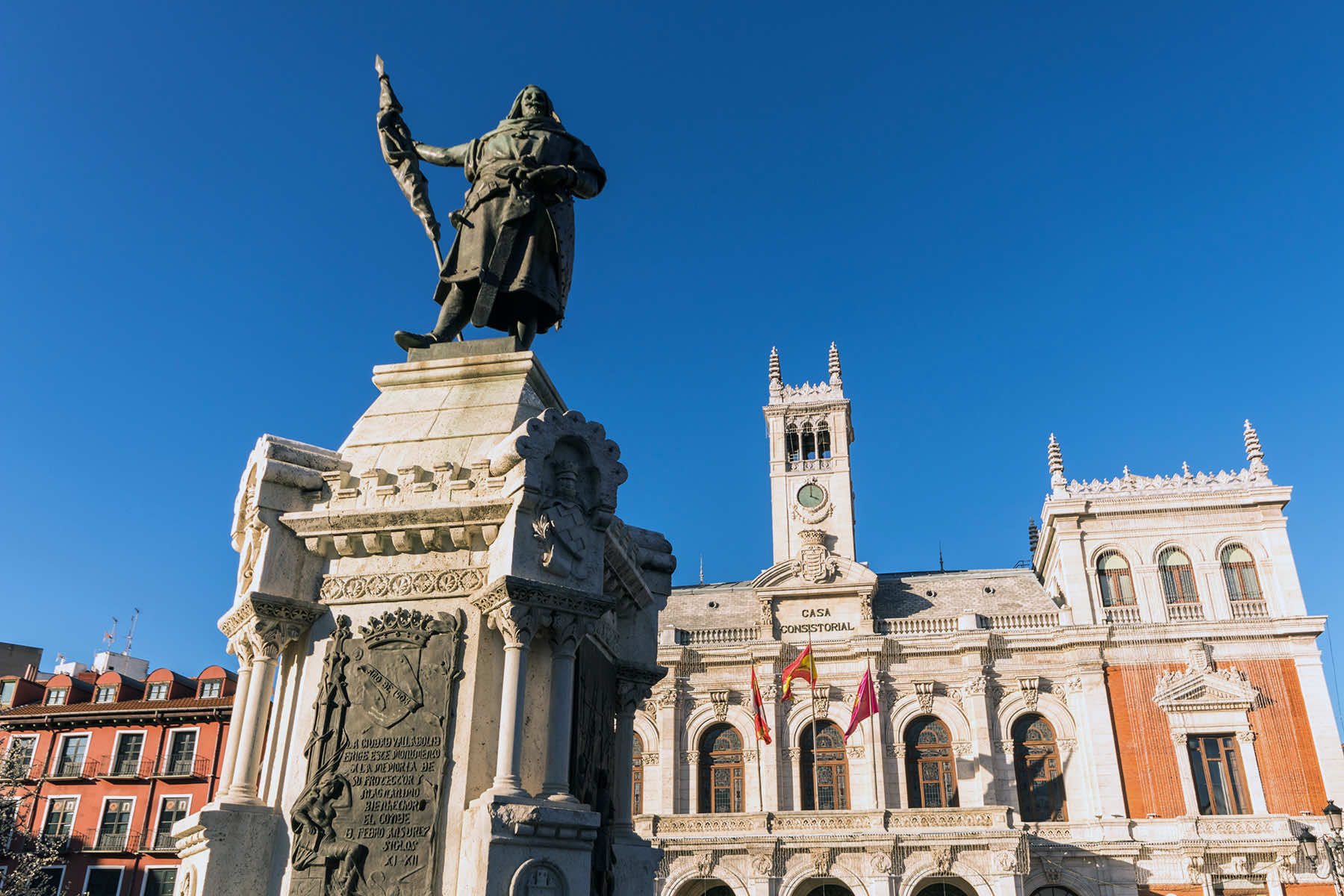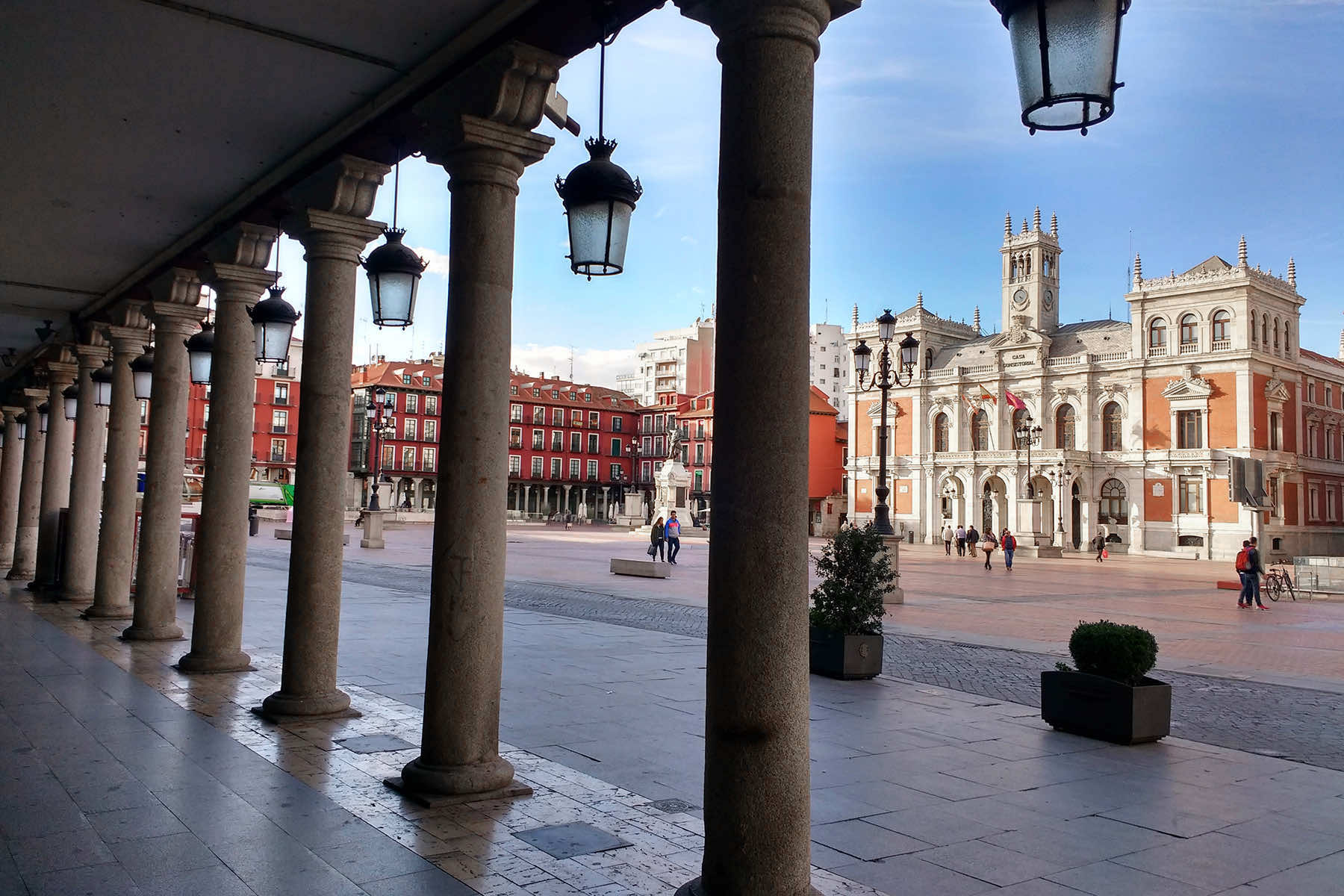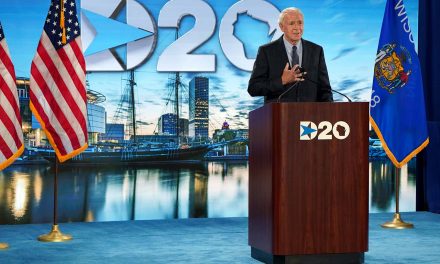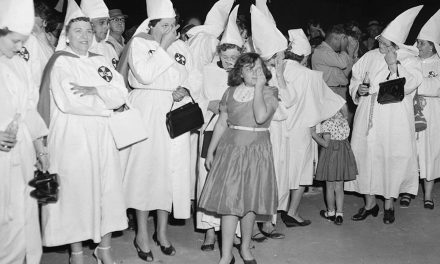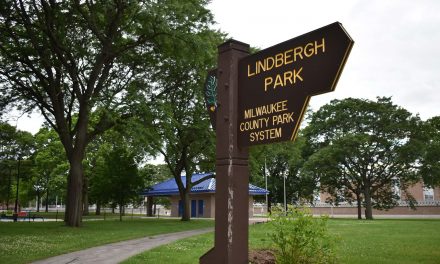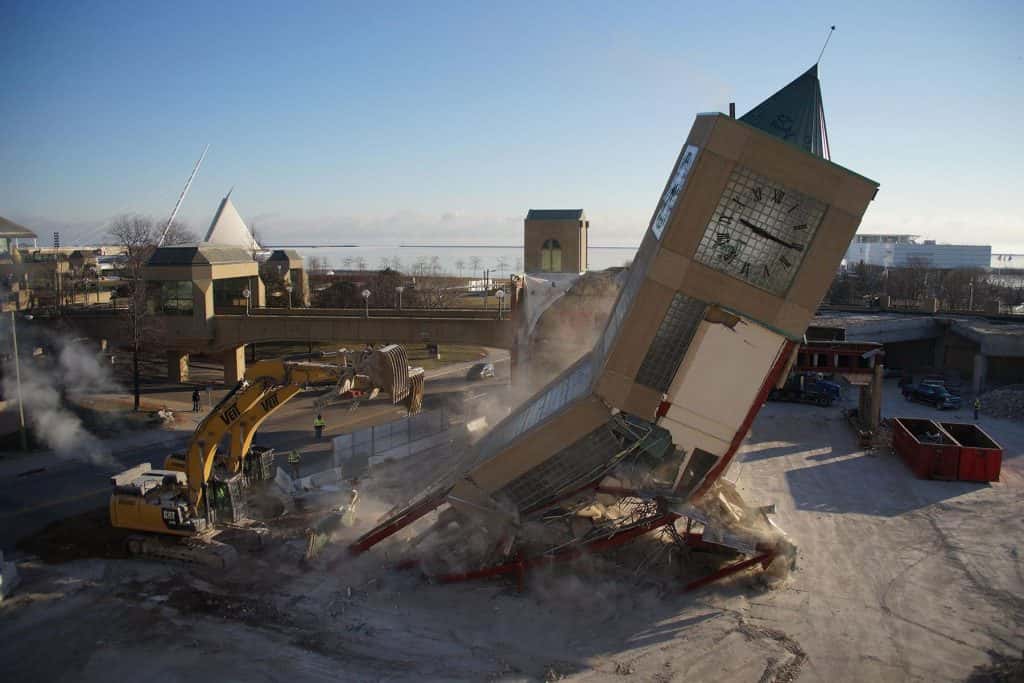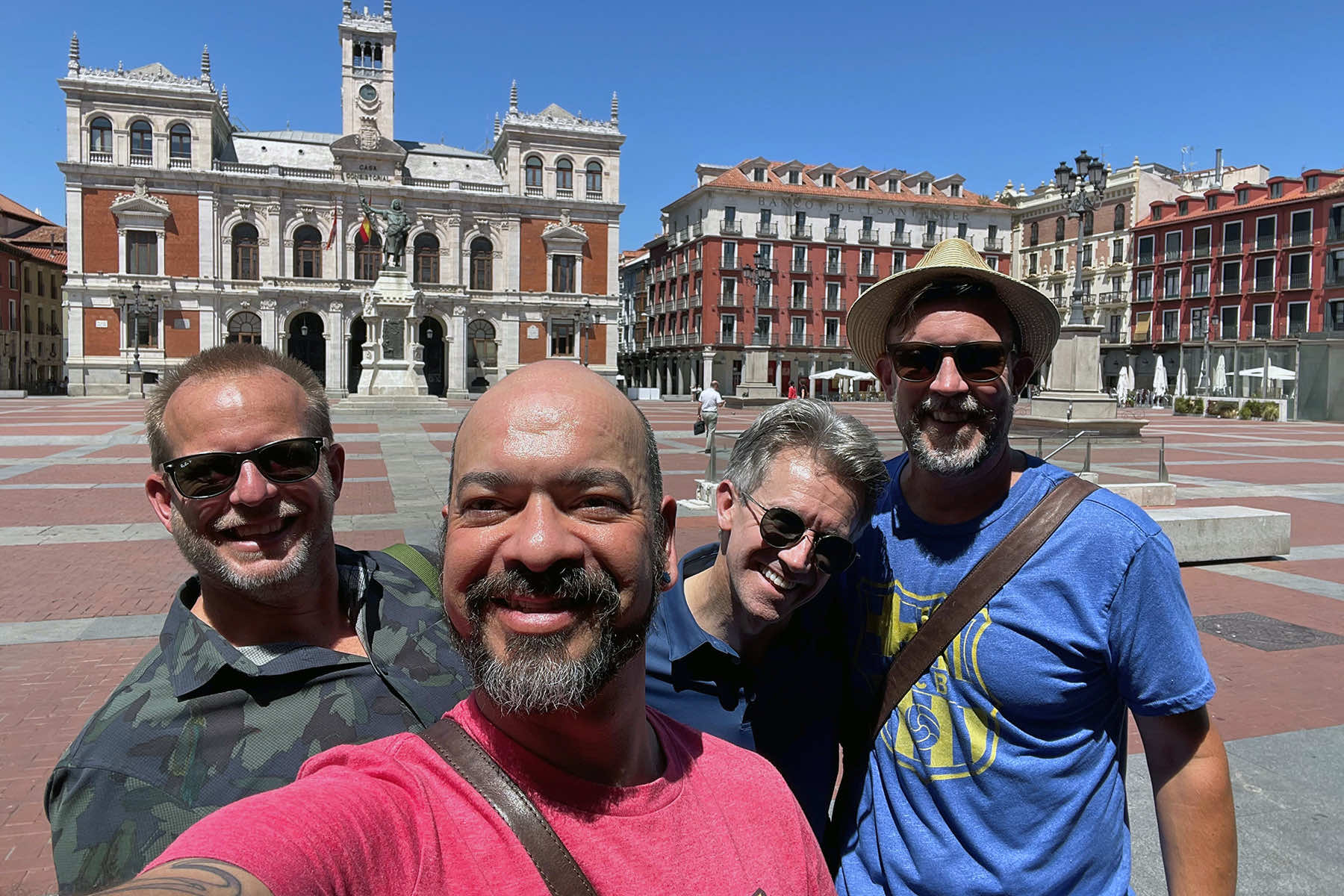
“What can we gain by sailing to the moon if we are not able to cross the abyss that separates us from ourselves? This is the most important of all voyages of discovery, and without it all the rest are not only useless but disastrous.” – Thomas Merton
Twenty-five years ago, as a third-year college student at the University of Wisconsin-Eau Claire just months from my 21st birthday, I traveled to Valladolid, Spain to study for a semester. I would live with a host family and another student, and immerse myself fully into the culture and language that I had been studying for six years.
In five short months, I would create an international family of friends that would share a bond so strong that we would be called to reunite twenty-five years later to celebrate the deep connections we had formed during that brief time together.
After years of flirting with the idea of a reunion and reflecting during the pandemic on how fragile our ability to bring a group of friends from four countries could be, we finally made it a reality this summer.
The trip back to Spain and to our memories of and love for one another showed me how and why social connection is so important in our lives. It also showed me how diverse settings, conditions, and circumstances facilitate opportunities to create and strengthen those vital connections.
SOCIAL ISOLATION AND PARENTAL STRESS
In my April article about my experience with social connectedness in India, I wrote about the national plan in 2023 to combat the epidemic of social isolation in this country.
> READ: Luke Waldo: A journey through India and its lessons of social connectedness for Milwaukee
In August 2024, the U.S. Surgeon General released a new advisory titled “Parents Under Pressure” on the mental health and well-being of parents. In short, nearly half of all U.S. parents are reporting “that most days their stress is completely overwhelming.” One of the primary contributors to that stress is social isolation.
Much like my trip in India, I experienced Spain, its people and their connections with these troubling realities in the United States on my mind. The interactions and observations that I had, inspired many insights as to how we might improve our social connectedness here at home.
THE CONNECTION OF A COMMON CAUSE
Twenty years ago, after having spent the previous three years in Barcelona, I walked out of the hot baggage claim in Santa Cruz de la Sierra’s airport in eastern Bolivia to be met by two Spaniards who would soon become my mentors and friends. Germán, the founder of Mi Rancho where I would work and live for the next two and a half years, and Goyo, its director, greeted me with hugs and a warm bienvenido.
Over the next two and a half years, my relationships were rooted in deep purpose. The ten of us who would reunite during this most recent trip – Goyo, Rosa, Susana, Ana, Diego, Ruth, Nacho, Esther, and Roberto – left our homes in Spain to commit to improving the lives of children, youth and women who had experienced profound trauma and loss that led them to a life surviving in the streets.
Through the intensity of that purpose, we formed strong bonds of trust through the intimacy and vulnerability of our shared experience. Our connections were forged through the rush of bringing a kid from the dangers of the streets to the sanctuary of our community. Those connections were often made stronger after supporting one another through the tragedy of loss after watching a child go back to those streets or burying a child who succumbed to illness.
Those shared experiences and their underlying purpose of providing a safe, nurturing environment for kids made this reunion after nearly twenty years feel like it was just yesterday that we were all in Bolivia together. We broke bread and some delicious Spanish queso and embutido, and told stories about the days we lived together, how the boys are doing today as men, fathers, and mentors, and how our lives and purpose have evolved over the past eighteen years.
It’s Happening in the Plaza
After a full day of sharing our stories, memories, and small tokens of our current homes – paella, licor de café, and a Racine kringle – we took a stroll into the foothills of the surrounding sierra before circling back to the town’s main plaza.
I have been fascinated by Spanish plazas since I first approached Valladolid’s Plaza Mayor as a student twenty-five years ago. As my roommate Josh and I crossed the plaza for the first time on our long walk to the university, I remember being in awe of its vast open space surrounded by colorful buildings and filled with a beautiful central fountain and hundreds of tables and chairs that would later be occupied by coffee and wine-drinking residents.
As the evening progressed, the plaza would become abuzz with energy and activity as neighbors, friends, and families came together to eat and drink, shop, play cards and soccer, or simply sit around the fountain to catch up. On this evening in the small town just outside of Madrid, the plaza was set up with a DJ that invited hundreds of couples, groups of friends, and parents and grandparents with their little ones to dance under the glow of the moon.
It was a powerful reminder that our built environment can create the energy and opportunity for people to build, strengthen, and celebrate their relationships and community.
THE SOCIAL MEDIA CONNECTEDNESS CONUNDRUM
After saying goodbye to my Bolivian Mi Rancho family, I joined my Valladolid friends who were the catalyst for this trip. While Paulo, Josh, Daniel and I had many different wish list items for our return to Valladolid where we all met twenty-five years earlier, walking back to our university was on everyone’s list. On the hot morning, we started on our long walk by passing by Paulo’s, then Dan’s host family’s apartment. While we all ended up together each morning for class, we had never fully appreciated where the journey began.
Upon arriving to the university building where we studied, we were blown away by how much the university had grown and modernized. As it was late July, we were not optimistic that we would find much happening in the building, but we wanted to walk its halls again. Upon entering, we met a young professor who asked us for whom or what we were looking. We shared that we were hoping to see our professors from twenty-five years ago if they by chance were still there.
He grinned. They were still teaching, and they were in the building. We walked down the hall where Paulo and I spent most of our academic hours in profe Cristina’s classroom. Cristina sat at the desk littered with piles of books and papers just as we had left her there decades earlier.
She picked her head up, paused for a moment with a confused look before breaking into a smile and an “Hostia!” We started to remind her of our names, but she interrupted us as the memories flowed back as she shared a story that made it clear that she had been transported back in time with us.
She was amazed by how we had stayed so close. Other students had come back to visit her, but never had a group of friends come together like this and certainly not from twenty-five years ago. It was in that moment that she reflected on what made our connection endure compared to more recent groups of students.
While smartphones and social media have facilitated our connection over the past decades, especially for a group spread across the U.S., Spain, Germany, Brazil, and New Zealand, it was the absence of those things in 1999 that built our relationships.
She talked about how difficult it was to get us to come back to class between courses because we were all in the hallways drinking coffee together and talking about our plans to meet after class. We were singularly focused on our experience together in Valladolid as we had five months together, and social media was not showing us what we might be missing back home.
When profes Beatriz and Raquel joined the conversation, they echoed the sense of loss they had for those times as their students now form few bonds with one another as they are so connected to their phones and what is happening in their faraway lives.
THE DEPTHS OF (HOST) FAMILIES
After multiple reunions with friends who had become family through our shared purpose in Bolivia and shared experiences and growth in Valladolid, I found myself balancing between the exhaustion of so many emotions and the seemingly endless adrenaline that being seen and understood by so many people creates.
All of those feelings came together when Josh and I walked back to our old apartment where we lived with our host family in Valladolid. Seeing that second-floor door open again after twenty-five years was like walking back in time to who we all once were. And yet, the grey in my beard, the hints of wrinkles in the corner of our eyes, told us all that we were here together twenty-five years after living together.
Our host family who took us in as one of their own was a working class family. Our host brother was a fishmonger and often brought home fresh seafood for the afternoon paella. They were a three-generation family in a three bedroom apartment. We lived in very close quarters with one another, our host parents, three of their twenty- to thirty-something children, and their five-year-old grandson – which meant delicious home-cooked meals, card games during siesta, and potential waiting for the bathroom.
While they took care of us as if they were our parents, they also honored our experience and independence as if they knew how life-altering our time and relationships in Valladolid would be. They trusted that we would ask for what we needed and that we would respect them and their home. Often that meant coming in very quietly from a night out as the sun was coming up, so as to not disturb anyone’s sleep. That trust and nurturing care made our experience feel like home even as we were discovering our new language, friendships, and culture.
In our short time together during this trip, we shared so many memories, laughed as we imagined how three of us fit in our tiny bedroom, and honored the depth and longevity of our relationship. We also learned that over the many years since we left they had taken in extended family members who were aging and going through difficult transitions. Even in their small home, there was always room for the enormity of their generosity, compassion, and care for their family, friends, and even strangers from strange lands like Josh and me.
SOCIAL IMMERSION
The stories told in this article were made possible because twenty-five years ago, Josh, a perfect stranger just hours before, looked across the table of a tiny Spanish bar and said, “We are here to immerse ourselves in Spanish language and culture, so let these be the last English words we speak to each other.”
I think often about that moment. If Josh and I had not made that commitment to one another, I am not sure that I would have learned the language as deeply as I did, pursued friendships with Spanish and Spanish-speaking friends, developed the bonds with my host family and professors, and fallen in love with the person I was and could be in their company.
Immersion, from the root mergere, means to plunge into something. Much as we did in the Mediterranean during this trip, we plunged into the depths, the murkiness, the darkest edges of ourselves and our world with the vulnerability and optimism that it takes to discover or create something new. These friendships with Josh, Paulo, Naroa, Miriam, Daniel, and David have endured decades and distance because we were either brave or reckless enough to immerse ourselves wholly into our new relationships with one another.
In a time when who we are is highly curated and polished on social media, this trip reminded me how critically important vulnerability, transparency and acceptance are to forming lifelong social connections. If this group of friends had been dependent on social media to meet, some of us would have never filtered through the algorithms to one another.
In reflecting on this incredible journey, it becomes clear that social connection can occur in many forms—through the built environment, birth and chosen family, and shared purpose. Whether gathering in plazas that create the space and opportunity for people to connect, bonding over a shared mission to uplift vulnerable communities, or forming lifelong friendships in the intimate quarters of a host family’s home, social connection gives meaning to who we are not only as friends, family, and community, but also as individuals.
These connections are nurtured by the physical spaces we inhabit, the meaningful work we engage in, and the memories we create together. From the university halls of Valladolid to the streets of Bolivia, each experience underscores that social connection is central to who we are and how we thrive.
APPLYING LESSONS FROM SPAIN TO MILWAUKEE
After returning home to Milwaukee and reflecting on what I learned from this reunion in Spain, I see both promise and opportunities in our city when it comes to creating intentional space for social connectedness. While Milwaukee does not have a plaza culture necessarily, we do have community gems like the Sherman Phoenix, Milwaukee Public Market, and our many County Parks.
In these spaces, people can eat and drink together, listen to music, play in green spaces and on playgrounds, and participate in activities with groups that share their interests and hobbies. These models can be replicated across the city, while also exploring the potential for developing a more stable and thriving plaza culture that builds off the energy that comes from our many summer festivals at the Summerfest grounds, and music series and markets at parks across the city.
At the same time, Milwaukee could invest in more housing and community developments that facilitate deeper social connectedness by creating multi-generational family living spaces and community spaces that invite residents and neighbors to come together through shared interests.
Lastly, if our city is going to improve the social connectedness of all Milwaukeeans, it must ensure that these spaces are created and nurtured not only in our downtown and wealthier neighborhoods, but most importantly in our neighborhoods that have seen their public pools emptied and public parks neglected.
What has always made Spanish cities so special for me is their walkability, the sight of a bench on the street or in the plaza seemingly any time you need one to rest or catch up with a friend, and the proximity of people and connection. Milwaukee can feel like those Spanish cities in the summer. It is time to make social connectedness an every-season priority.
Overloaded: Understanding Neglect is a Milwaukee-based podcast series that aspires to build a shared understanding of neglect, its underlying root causes, and how they overload families with stress.
In this episode, Diana Maya and Jessika Harlston tell their stories of how social connectedness through the support of Amy Baldus and Ayesha Teague opened them up to their potential.
Luke Waldo
Alex Segre, Joaquin Ossorio Castillo, JJ Millan, Alfonso de Tomas, and Shutterstock
Overloaded: Understanding Neglect is a Milwaukee-based podcast series that aspires to build a shared understanding of neglect, its underlying root causes, and how they overload families with stress.





